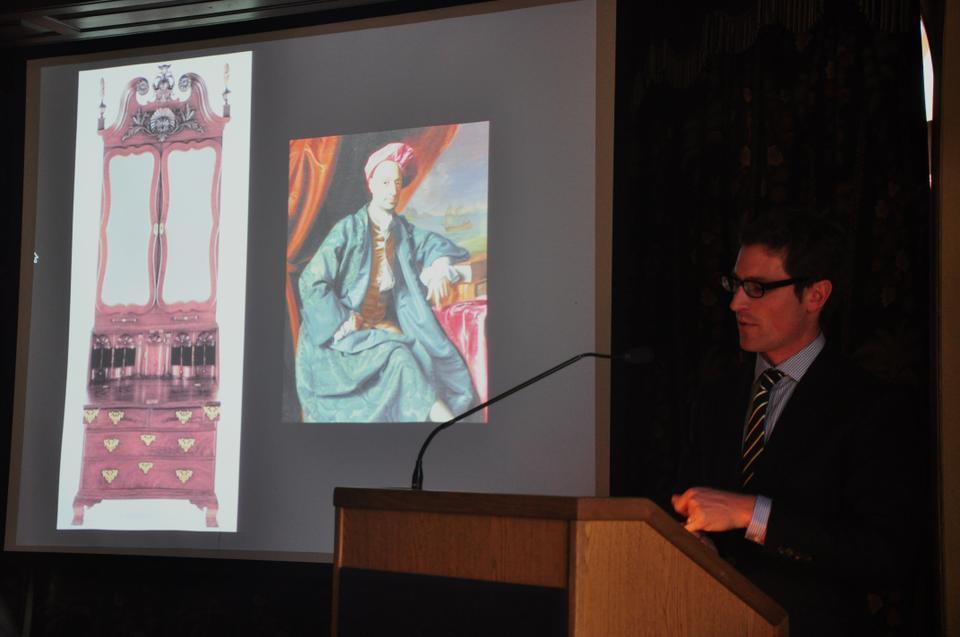
News
Cambridge Residents Slam Council Proposal to Delay Bike Lane Construction

News
‘Gender-Affirming Slay Fest’: Harvard College QSA Hosts Annual Queer Prom

News
‘Not Being Nerds’: Harvard Students Dance to Tinashe at Yardfest

News
Wrongful Death Trial Against CAMHS Employee Over 2015 Student Suicide To Begin Tuesday

News
Cornel West, Harvard Affiliates Call for University to Divest from ‘Israeli Apartheid’ at Rally
Speaker Makes Art Current

Bringing contemporary artists into a traditional museum setting can make the art relevant to otherwise alienated audiences, specifically racial minorities, art curator and professor Ethan W. Lasser said at the Harvard Faculty Club on Tuesday.
Lasser, who teaches art history at the University of Wisconsin and works for the Chipstone Foundation, a research institution that produces art exhibits, described three of his past exhibitions which sought to “further historical knowledge but also equip visitors with interpretive tools to use both inside and outside the museum context.”
Lasser said that one of his projects, which focused on a ceramic pot made by a South Carolina slave in 1838, addressed concerns far beyond 19th century earthenware. In the face of considerable racial segregation in Milwaukee, Lasser said that by adding contemporary performance to his show, he created an exhibit that “brought the voice of the outside inside—and sparked a city-wide conversation about the function of the museum and what divisions it sustains, perhaps unknowingly.”
The creator of the pot in question was known as Dave the Potter. Despite a ban on slave literacy, Dave inscribed his pots with verses such as “When you fill this jar with Pork or Beer, Scot will be there to get a peace [sic].” To highlight these distinctive verses, Lasser invited Theaster Gates Jr., a recent Loeb Fellow at the Harvard Graduate School of Design, to bring a contemporary element to the exhibit.
Gates staged a performance corresponding with the museum exhibit in which Milwaukee gospel choirs sang Dave’s verses.
Speaking about Gates, Lasser said, “He gave me insight into the production of the object [and] found contemporary significance [in the pot] that I couldn’t have found on my own.”
Lasser added, “It’s become kind of fashionable for gallery curators to invite contemporary artists to engage in commentary with the work [on display].” He described his other exhibits showcasing the work of artists ranging from colonial America to the present.
In one show, Lasser displayed colonial objects including a wooden armchair from Puritan New England, which was carved in a style reminiscent of a gravestone, and an imposing merchant’s desk from Philadelphia, which, according to Lasser, underlined its owner’s wealth and power.
For Lasser, these historical objects “focus on the agency of things [and] how they reinforce moral codes, support a certain identity, and regulate the body.” For example, he said that the iconography on the chair served as a reminder of death’s imminence, an important aspect of religion in New England at the time.
Likewise, Lasser called the desk “performative object.” He explained, “In the process of opening its doors, the merchant could add to the symbolic language of the object and show off his genteel grace and ability to organize.”
He also curated a show featuring the work of 16 artists who each made their piece using only one tool. Lasser said he aimed to question “what constitutes a tool” and “the centuries-old idea that the mental and the manual should be separate.”
Despite their differences, Lasser said “all three [of these exhibitions] are underpinned by the same idea of investigating the manifold possibilities of the museum.”
—Staff writer Ola Topczewska can be reached at atopczewska@college.harvard.edu.
Want to keep up with breaking news? Subscribe to our email newsletter.
